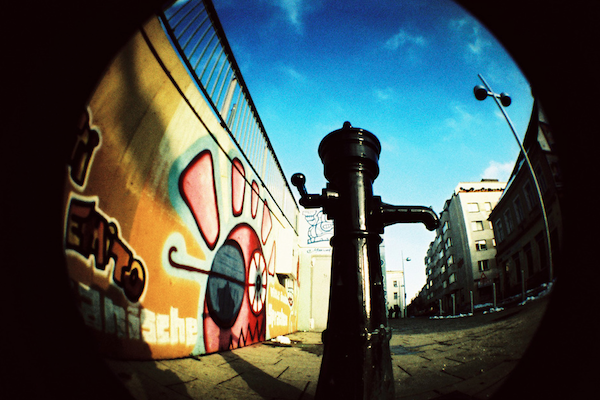

Try to have fun and play with the ‘rules of lomography’ or break them. Taken by mightymouse with a Lomo LCA+ RL loaded with Kodak EBX (35mm, 100 iso) film Long exposures, double exposures, red scaling, these are just some things you can do to create funky pictures with your lomo camera. You can have your rolls cross-processed to give that saturated, high contrast result popular in lomography.
#Lomography fisheye iso
400 iso film is great for most conditions. Thus, buy cheap rolls of film first to use as your test roll. If your rolls come out with nothing, don’t give up just yet–it’s part of the learning process. Don’t buy expensive film just yet–if it’s your first time, expect to fail miserably.

There are also 110 film cameras, a smaller and even rarer film (thus harder to develop).įor beginners, we recommend you choose the regular 35mm film first. If you don’t want the additional expenses and hassle, opt for 35mm film cameras (Fisheye, Diana Mini, Superheadz, etc.) where you can have it developed in any drug store. The Holga and the Diana F+ uses 120 film, which has to be done in a film specialty store. The Supersampler takes four photos within 2 seconds or in 0.2 seconds.Ĭolorsplash has some really colorful flashes, and the Rocket Sprocket takes wide shots with the sprockets in them.ĭifferent effects of different lomography camerasĭo your research and determine the type of photos you want to achieve.Īlso note that some lomo cameras use different kinds of film. For example, the Fisheye takes a 170-degree view around you, creating an almost circular image. There are many different kinds of lomography cameras! How do you choose which one is best for you?ĭifferent cameras have different uses, features and effects. So even if it’s an overpricing venture, they’re still making good money out of it. Love it or hate it, lomography is fun and addicting, and I still buy the cameras and the expensive film even if i know I’m being ripped off. The original Diana+ was sold for only US $1, but the new, updated version by Lomography sells for US $50.Īside from Lomography, there are now recent companies that now sell toy cameras, often much, much, cheaper, like the Four Corner Store. The LC-A is sold for aroud US $30, when the first lomographers bought it, but now they sell for around US $250. The Lomographic Society is criticized for their overpricing, one point saying that the company sells their cameras, film and equipment for far more than it’s worth. Most lomography cameras work poorly indoors, cloudy or at night, except if you switch it to bulb mode or if you have flash. The best way to learn about working with available light is by trying a lomography camera. These toy cameras work best in broad daylight, where it’s sunny and warm. Taken by mephisto19 with a Lomo LC-A+ loaded with Kodak EBX

The Lomographic Society International headquarters is in Vienna, Austria, but it maintains a website where lomographers can purchase their cameras, interact with fellow photographers, share their photos and techniques, etc. Lomography is considered an art movement as there are now several stores, galleries, groups, competitions and embassies around the world aiming to spread and support the art.


 0 kommentar(er)
0 kommentar(er)
